As I discussed earlier this week in regards to Chicago's casino plan, bus-only lanes and other strategies to speed up bus service and make it a more reliable and appealing travel option are a major piece of the puzzle for addressing our city's traffic death epidemic, congestion, pollution, and climate change.
There was some minor good news in that department today as the Chicago Department of Transportation and the CTA, along with sustainable transportation-friendly 1st Ward alder Daniel La Spata, announced that work has been completed to make permanent the temporary bus lanes on Chicago Avenue. Those "pop-up" lanes were originally striped in fall 2020 on the 3.5-mile stretch of Chicago between Ashland (1600 W.) and Laramie (5200 W.)
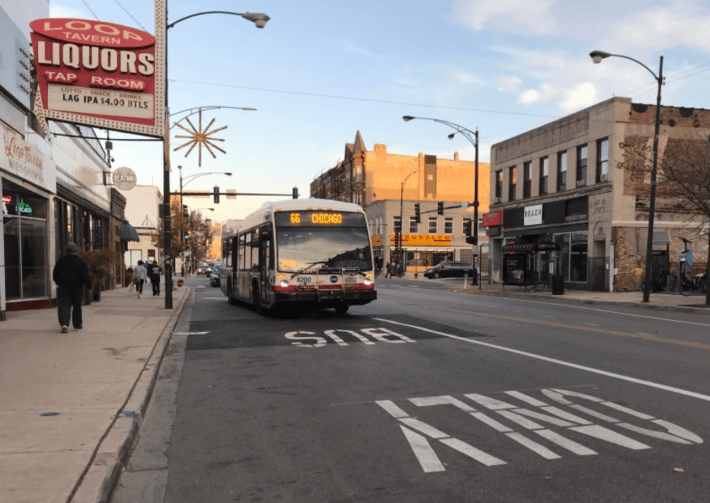
"The completion of this full-time, dedicated bus lane on Chicago Avenue is part of our citywide commitment to ensure all of our residents can get around our city safely and efficiently,” said Mayor Lori Lightfoot in a statement. “Investing in a robust and reliable public transportation system improves the transit experience and quality of life for all residents, and we are proud to be able to continue enhancing this important resource."
"This upgrade to Chicago Avenue is good news for residents of the 1st Ward and everyone who relies on the #66 bus," stated La Spata. "Keeping our buses moving efficiently is one of my top priorities. I know a lot of 1st Ward residents rely on the Chicago bus, and I was pleased that they developed this proposal through our participatory budgeting process." Participatory budgeting elections allow constituents to vote on which infrastructure projects should be funded with the ward's $1.5 million in annual discretionary "menu" money.
The outside travel lanes of four-lane Chicago Avenue between Ashland and Western (2400 W.) in West Town now feature bus-only lanes that will be in effect 24-7, with red paint in some locations. That's in contrast to bus lanes on Chicago Avenue further east in River North, which are only in effect during rush hours.
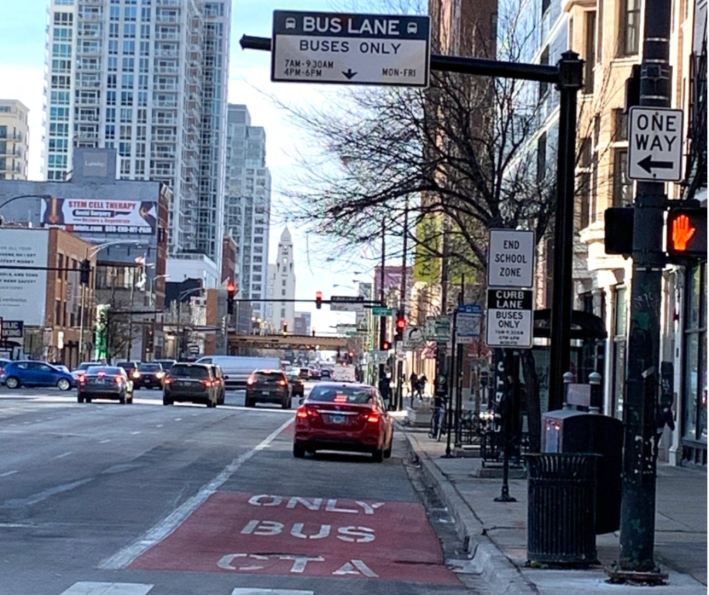
A driver blocks a Chicago Avenue bus lane near Clark Street in River North. Photo: CDOT
However, it's worth noting that no new bus lane mileage has been added, and this one-mile stretch in West Town represents less than a third of the length of the Ashland to Laramie corridor. The new lanes are marked with both the word "Bus" and bicycle symbols, which makes it clear that it's legal to bike in them.
"The temporary, pop-up essential bus lanes were a useful tool we implemented during the pandemic that have since proven to be vital in ensuring that buses traveling the #66 bus can pass through what has long been a bottle-neck and major source of delays along the route," said CTA president Dorval R. Carter, Jr. in a statement. “By making these temporary measures permanent, we are cutting several minutes off the typical commute for those traveling through the corridor, and further improving service reliability across the entire route."
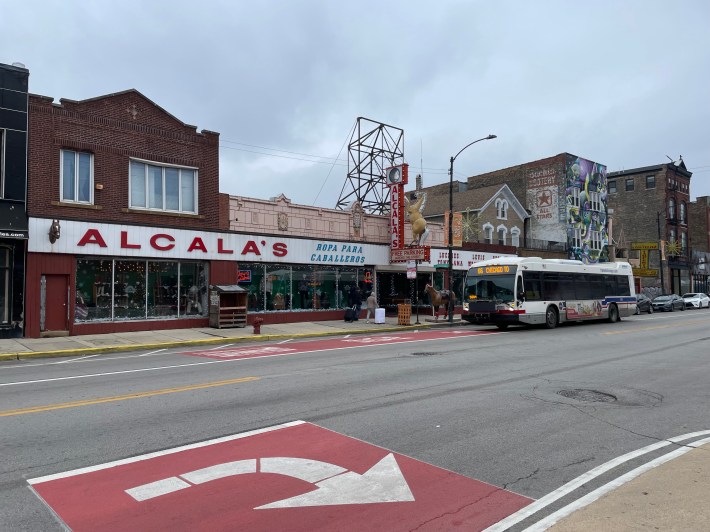
It's not clear whether the CTA has actually found the temporary bus-only lanes on Chicago Avenue, which are sometimes ignored by drivers, have resulted in a measurable time savings for riders. I've asked the agency if they have any stats on this and will update this post if I hear back.
The new Chicago improvements are part of the city's Bus Priority Zones program, which also includes spot improvements to other busy bus corridors like 79th Street and Western Avenue. The focus is on addressing specific bottleneck points along the routes caused by traffic jams generated by private vehicle drivers and insufficient space for bus boarding.
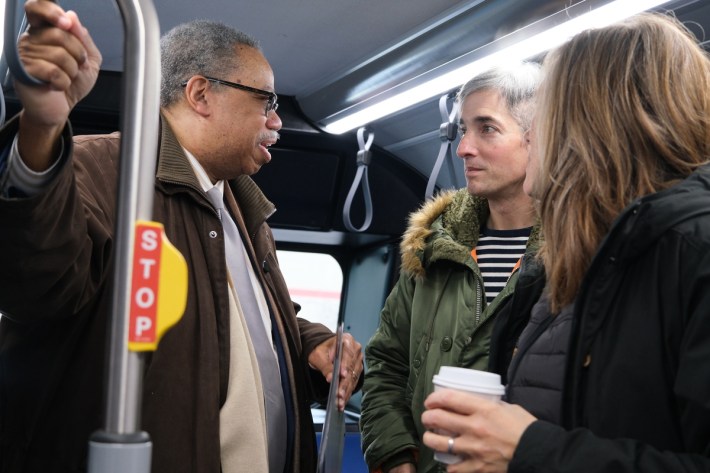
"CDOT and CTA are working closely together to improve the entire transit experience – from installing infrastructure that improves bus efficiency to creating more walkable streets that make getting to and from bus stops safer and more comfortable," stated CDOT chief Gia Biagi. "This full-time bus lane on Chicago Avenue, combined with ongoing pedestrian safety investments, will create a more transit and people-friendly street."
Other BPZ projects on deck include:
- Western Avenue between Logan Boulevard (2600 N.) and George Street (2900 N.): Rush hour curbside bus lanes.
- 79th Street at Kedzie (3200 W.) and Columbus avenues: Bus lanes, queue jump signal (allowing buses to get a head start on drivers at stoplights), bus stop improvements, cul-de-sac, and intersection safety upgrades.
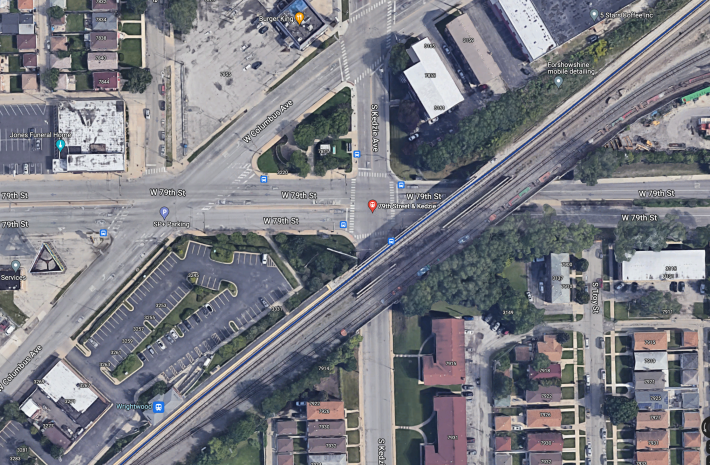
More interventions are planned for Chicago Avenue in West Town with the intention of calming traffic and improving pedestrian safety. Within a few weeks, CDOT will install sidewalk extensions to shorten crossing distances, and "harden" left turns with bollards and speed humps, at various intersections. The latter treatment, called Left Turn Calming, forces drivers to take lefts at a 90-degree angle, which slows them down and makes it easier for them to see pedestrians in crosswalks.
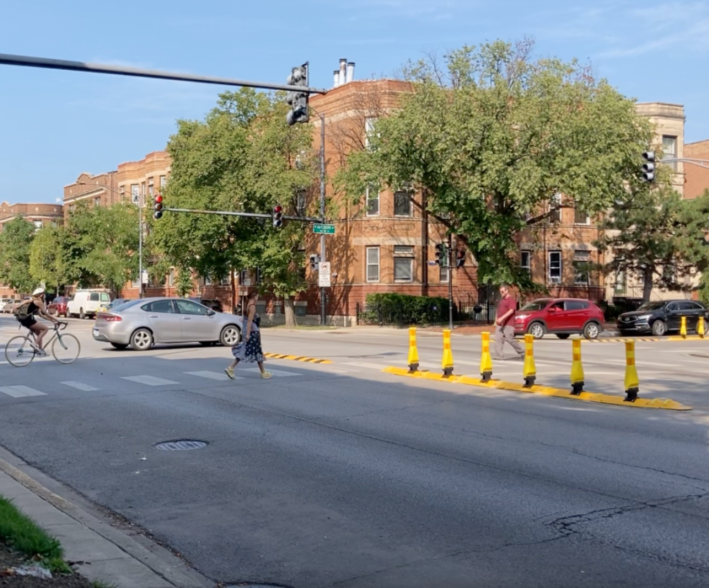
Other corridors getting bus improvements include 87th Street in Auburn Gresham and Milwaukee Avenue in West Town. 87th between Damen Avenue (2000 W.) and Halsted Street (800 W.), identified in the city's Vision Zero Action Plan as a high-crash corridor, is getting nine bus boarding bulbs. These concrete curb bump-outs allow bus drivers to pick up passengers without pulling all the way to the regular curb, and also shorten the street crossing distance. The corridor is also getting 15 pedestrian islands, which give people a safe place to wait for a break in traffic when crossing the street, plus sidewalk extensions at 18 intersections.
On Milwaukee Avenue between Carpenter (1030 W.) and Division Street (1200 N.) the transportation department recently eight island bus boarding platforms, which double as concrete protection for curbside bike lanes.
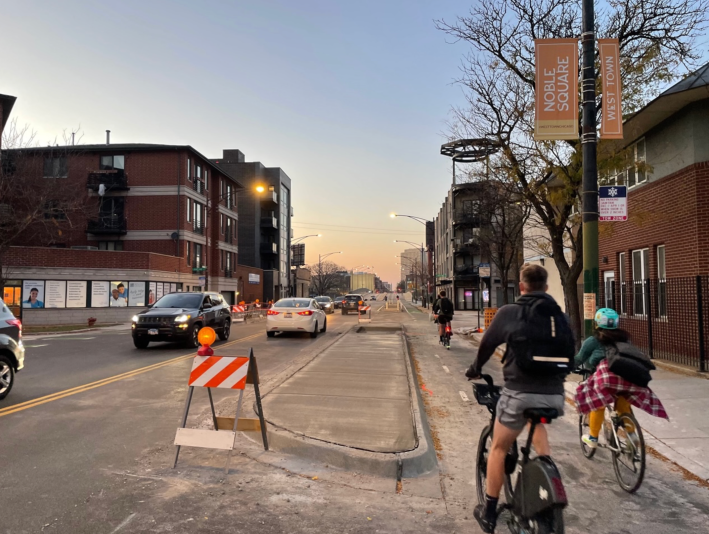
The city is currently working on the Better Streets for Buses plan, based on input collected from 1,200-plus residents last spring about which corridors should be prioritized for transit improvements. The CTA and CDOT will will use this feedback and additional research to write the final plan for bus route improvements, slated for release in early 2023.
"We applaud the city for making these bus lanes on Chicago Avenue permanent," Active Transportation Alliance spokesperson Ted Villaire told Streetsblog in response to the announcement. "When buses have their own dedicated lanes separate from cars, the impact has been nothing less than transformational. Buses suddenly become faster and more reliable, and more people want to use them — a dramatic makeover at minimal cost. Sadly, compared to New York and Los Angeles, Chicago is lagging far behind in terms of mileage of dedicated bus lanes. While other cities have been laying the groundwork for a 21st Century bus system, Chicago has languished with hardly any progress."
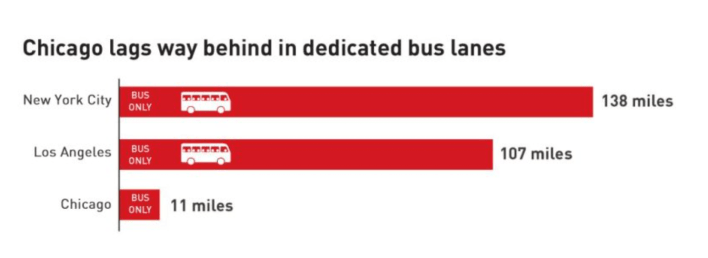
"Commuters Take Action is excited to hear about the new dedicated bus lanes on Chicago Avenue," Fabio Göttlicher, a founder of the grassroots advocacy group, told Streetsblog. "On a busy route such as the #66, there is no reason that the entire route does not have a dedicated, speedy lane. Any Chicagoan who's experienced the delight of traveling on a bus in a dedicated lane knows how quickly these benefits can diminish when an unauthorized vehicle is blocking the way. We need legislature to call for automated bus lane enforcement, such as New York City has championed."
Chicago's downtown Loop Link express bus corridor, which debuted seven years ago, only saw modest bus speed improvements in its first years, partly because private vehicle drivers often travel or park in its bus lanes. Camera enforcement of bus lanes would require a new Illinois law to legalize it.
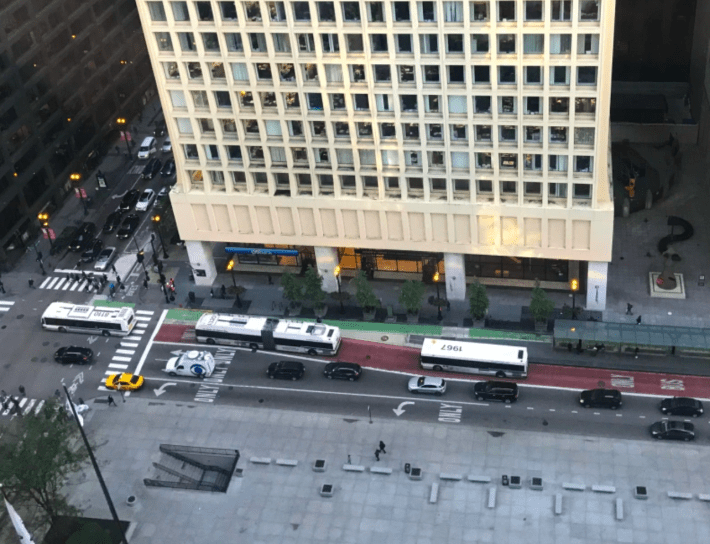
"We welcome 1st ward aldersperson LaSpata's efforts to bring such legislation to Illinois," Göttlicher said. "Let's not stop there, Chicago's busiest bus routes could be improved by being converted to light rail or bus rapid transit. The demand and ridership is certainly there."





